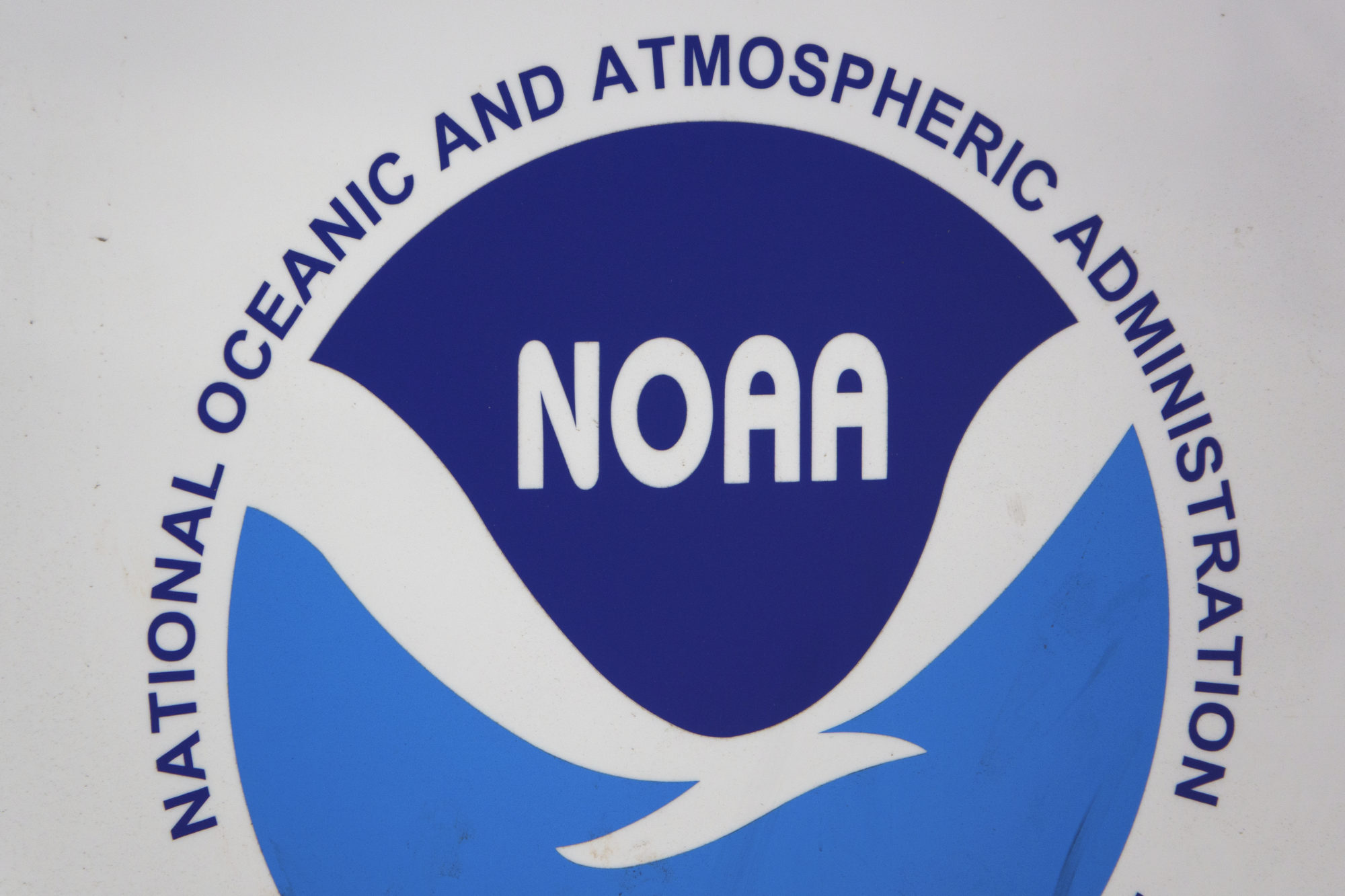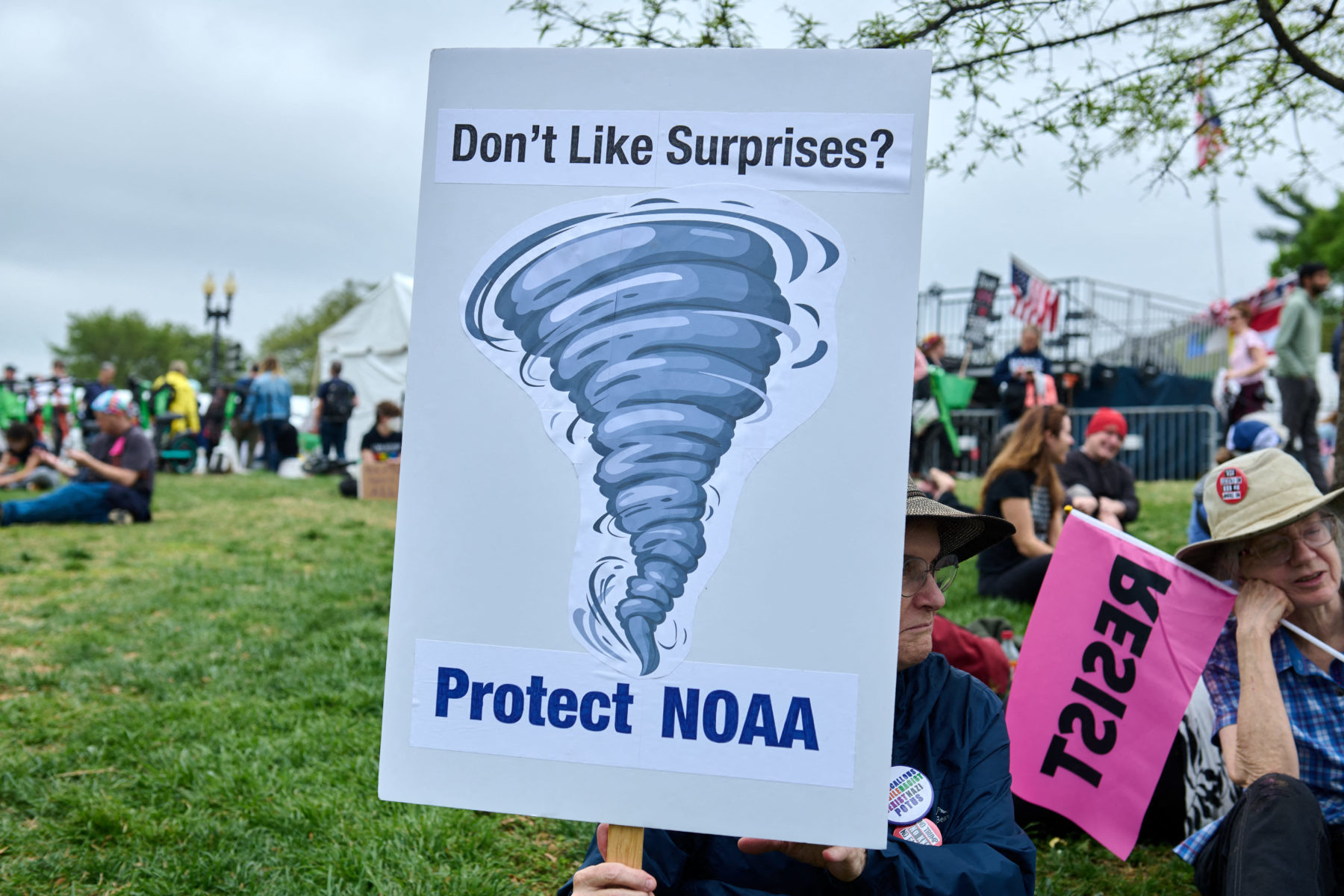

WASHINGTON — Climate scientist Sarah Cooley has been fired, rehired and fired again.
Cooley joined the National Oceanic and Atmospheric Administration last year to lead the agency’s efforts to address ocean acidification. Now she is one of hundreds of probationary workers at NOAA whose jobs were slashed by the Trump administration in February. When a federal court blocked the move weeks later, the workers were reinstated, but that was not the end of their turmoil.
Workers who spoke with PBS News said they held onto an inkling of hope as legal challenges made their way through the courts. The employees, placed on paid leave, were applying for jobs, updating their LinkedIn profiles, while clinging to the possibility they could return to their work.
Then another court ruling reversed the reinstatements of some 24,000 probationary workers at multiple agencies. At NOAA, they were all re-fired last week.
Current and former employees say fewer people working at NOAA with fewer resources could whittle away the agency’s ability to carry out its mission. Its wide-ranging portfolio includes providing reliable and life-saving information on the climate, weather and oceans, as well as supporting coastal communities and ecosystems.
For Cooley, who has spent 15-plus years studying how carbon pollution is altering the ocean’s chemistry, the professional and personal whiplash has been gutting. She said it’s the “limbo-iest limbo I’ve ever been in.” Now with having to navigate unemployment benefits and health care, and to pay rent while looking for a new job, stresses are piling up.
Several NOAA employees also said there’s mounting uncertainty and fear over which offices are going away, which are being consolidated, and who will be left to run the agency, especially the early warning systems essential for broadcasting life-saving severe weather information.
According to a memo shared with PBS News by a group of both former and current NOAA employees, an early draft of the White House budget plan envisions a far “leaner NOAA,” cutting more than a quarter of the agency’s 2026 budget.
With pending layoffs and reorganizations expected at NOAA, Cooley’s optimism is diminishing as her “in-between” employment situation becomes untenable.
“I had a little bit of hope that maybe, maybe, maybe I would be reinstated,” she said. Now she feels “a lot more fatalistic.”
NOAA employees caught in a ‘liminal state’
Watch the segment in the player above.
For affected employees, the chance to redress their firings narrowed further last week when the U.S. Supreme Court stepped into a related legal debate.
To challenge the mass firings seen across the federal workforce, workers and supporting unions have filed several class action appeals with the U.S. Merit Systems Protection Board, an independent agency that adjudicates personnel matters. The workers say the federal government failed to follow proper procedures in laying people off.
But Cathy Harris, a Biden appointee to the board, has been fighting her own firing by the Trump administration, which has worked to dismiss a number of agency leaders. An appeals court ordered Harris’ reinstatement, but the Supreme Court paused that ruling while it considers the case, allowing her removal for now.
Policy analyst Caitlin Adams is coming to terms with the fact she may no longer be a federal employee.
Adams joined NOAA in 2016, hoping to get a closer look at how her work was affecting the communities she was serving.
She was promoted last year to senior adviser to the head of National Marine Fisheries Service, serving as right-hand person to a politically appointed leader. After the 2024 election, and as the Biden pick cycled out, Adams was preparing to support the new Trump appointee.
She was fired before anyone was named.
“I would love to go back to federal service if and when the opportunity arises, but I don’t think I can continue to live my life in this liminal state of not knowing,” Adams said.
NOAA employees who have not been fired have until April 17 to accept an early retirement or voluntary separation offer before the agency faces more layoffs.
One longtime NOAA employee, who was not authorized to speak with journalists, said they took the voluntary separation offer, which comes with a financial incentive of up to $25,000 dollars. The worker said they felt forced into making that decision.
Trump administration changes to in-office work policies meant the employee had to begin commuting between their home in New York and their office in D.C. nearly every week, five days a week. Reporting to an existing office closer to home wasn’t possible, the employee was told.
That wasn’t sustainable for a parent with young kids.
After 14 years at the agency, the NOAA worker thought they’d retire from the agency. Now, they’ve accepted another job — a lower paying one. The worker spoke on condition of anonymity out of fear of jeopardizing their new job.
The ultimate fate of NOAA isn’t the employee’s biggest concern. It’s what happens to the “really, really dedicated folks” at the agency, who will have to limp along after the declining budgets and staff.
“These are people who went to college for marine science and have wanted to work for NOAA for their entire lives,” the employee said, and they “will try to maintain the same level of service to the point where they’ll break.”
How the Trump administration is reshaping NOAA

A sign displaying the National Oceanic and Atmospheric Administration logo outside a fisheries science center in San Diego. Photo by Kevin Carter/Getty Images
NOAA was forged under the Department of Commerce in 1970 by merging programs found in other departments. President Richard Nixon established the agency, alongside the Environmental Protection Agency, so that the country could deepen its understanding of the “total environment;” the land, water and air.
The National Weather Service, one of NOAA’s six major offices, is perhaps the most recognizable component of the agency for its weather forecasts and urgent warnings about hurricanes, floods, heat waves, tornadoes and tsunamis.
WATCH: The scientific impact of Trump’s cuts to NOAA and the National Weather Service
The U.S. dove headfirst after World War II into oceanographic research, flourishing through the Cold War. The U.S. military’s mission to expand naval warfare also drove a need to better understand the world’s oceans. Oceanographers made breakthroughs in understanding plate tectonics, the heat flowing from deep within the earth, and underwater mountain ranges that zig and zag along the ocean floor.
“Many great earth science discoveries have followed from our simply being present above, on and below the ocean,” Cooley said. By stepping away from that work, or trying to commercialize or privatize some of these functions, “we are losing that finger on the pulse of the Earth system.”
According to the initial proposal by the Office of Budget and Management obtained by PBS News, NOAA’s proposed budget for the coming fiscal year would be about $4.45 billion, shaving some $1.7 billion from its current funding level of $6.1 billion.
Under the proposal, climate research would take a big hit. Among the steepest cuts laid out in the memo is the proposed elimination of Oceanic and Atmospheric Research. Close to 75 percent of funding for NOAA’s research arm would be cut. Other programs, such as those dedicated to tornado research and ocean acidification, among others, would be distributed to other parts of the agency.
Another major NOAA office, National Marine Fisheries Service, could face a nearly 30 percent cut, or a drop of $324 million in funding. The line office, which manages the country’s fisheries, would no longer see funding for species recovery grants or habitat conservation and restoration. NOAA Fisheries would prioritize work that supports the administration’s goals and “unleash American energy,” the memo said.
NOAA officials did not respond to questions about the planned budget cuts and concerns about the agency’s ability to carry out its mission with less resources before the deadline for the publication of this report. This piece will be updated with any future comments or responses from NOAA.
Rick Spinrad, a former NOAA administrator under Biden, says the budget proposal is random and lacks strategic guidance.
“I’m frustrated because I would much rather that the metric [used to shape NOAA] be one of effectiveness rather than efficiency,” said Spinrad, who’s worked in the U.S. government through nine different administration changes, starting with President Ronald Reagan.
“If you cut research, you’ve basically removed the seed corn for any further progress in your mission,” he said. “What you do when you cut research is you say that, as of today, you are satisfied with the quality and utility of all of the products NOAA provides.”
Cutting research means NOAA will not be able to improve the accuracy of the track forecast for hurricanes, information that emergency managers, state governors and insurance companies all rely on, he said.
The draft budget plan has not been finalized yet and would need to be approved by Congress.

A protester holds up a “Protect NOAA” sign at the “Hands-Off” protest in Washington, D.C., against the Trump administration. Photo by Dominic Gwinn/Middle East Images/AFP via Getty Images
On the campaign trail, Trump tried to distance himself from Project 2025, a conservative policy road map on how to reshape the federal government. Today, several people who worked on Project 2025 are now key figures in Trump’s administration to carry out his agenda. That includes Russell Vought, director of the Office of Management and Budget and principal author of Project 2025.
Tucked into the 922-page document is a call for NOAA to “be broken up and downsized.” It cited the agency as one of the main drivers of the “climate change alarm industry.”
Climate research in general has taken broadsides from the Trump administration. The Commerce Department pulled $4 million in funding for three climate-related programs at Princeton University, saying the research “promotes exaggerated and implausible climate threats” and increased “climate anxiety” among young Americans.
“I don’t think you can erase climate science,” said a current NOAA employee responding to the draft budget plan. “You can stick your head in the sand, but it’s still there.”
Losing out on so much good science from the cuts would set the agency back, the employee said. It also signals to young scientists that there’s no future for them in the government.
“Why would a young scientist or early career scientist ever think to go into public service if they don’t think their science will make a difference or even be listened to?” the worker said.
A reduction-in-force plan, with a goal to cut another 10 percent of the agency’s workforce, is on the horizon.

A wave painting gifted to climate scientist Sarah Cooley from a former mentee. Photo courtesy of Cooley
Cooley began to clean out her office in the weeks before she first got sacked. A sweater. A tea cup. Some spare shoes.
When she was fired in February, only a few items remained. She packed up a painting of a wave — curling and crashing below a setting sun — and left.
Insightful, trustworthy journalism, for everyone.
Your tax-deductible donation ensures our vital reporting continues to thrive. Support PBS News Hour now.

















































